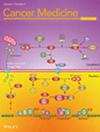Machine Learning-Based Model for Predicting Recurrence-Free Survival After Interventional Therapy in Malnourished Hepatocellular Carcinoma Patients
Abstract
Objective
This study intends to utilize machine learning approaches to screen out the crucial factors affecting the recurrence of hepatocellular carcinoma (HCC) patients with preoperative malnutrition after interventional therapy, and based on the identified factors, develop a nomogram for predicting the patients' 1-, 3-, and 5-year recurrence-free survival (RFS).
Methods
This study encompassed the clinical data of 512 malnourished (CONUT score ≥ 2) HCC patients who received the combination treatment of transarterial chemoembolization (TACE) and radiofrequency ablation (RFA) at Beijing You'an Hospital between January 2014 and January 2020. These patients were then randomly partitioned into training and validation cohorts at a 7:3 ratio. To investigate the factors influencing the post-treatment recurrence of malnourished HCC patients, methods such as random survival forest (RSF), eXtreme gradient boosting (XGBoost), and multivariate Cox regression analysis were employed. A nomogram was constructed based on the identified crucial factors to predict RFS in HCC patients. Subsequently, its performance was evaluated through Kaplan–Meier (KM) curves, receiver operating characteristic curve (ROC), calibration curve, and decision curve analysis (DCA).
Results
This study determined that GGT, APTT, age, and ALT are independent risk factors influencing recurrence in malnourished HCC patients. Based on the four risk factors, a nomogram for predicting RFS was effectively developed. The KM curve analysis showed that the nomogram could significantly distinguish between patient groups with varying recurrence risks. Furthermore, the nomogram's discriminative ability, accuracy, and decision-making efficacy were validated through the above-mentioned evaluation indicators, collectively suggesting its robust predictive performance.
Conclusions
We developed a nomogram that can predict the 1-, 3-, and 5-year RFS of malnourished HCC patients after undergoing the combination treatment; the constructed nomogram exhibited favorable predictive capabilities.


 求助内容:
求助内容: 应助结果提醒方式:
应助结果提醒方式:


